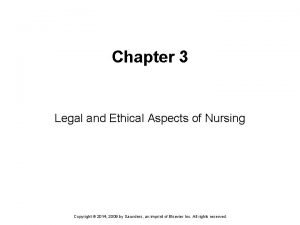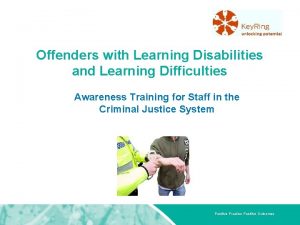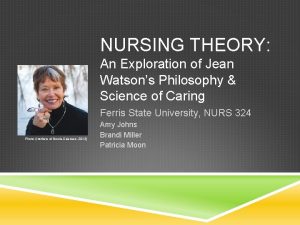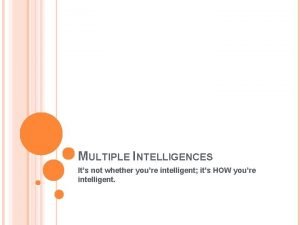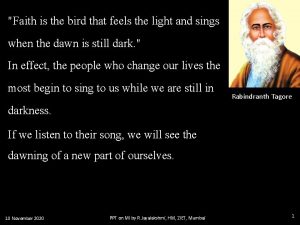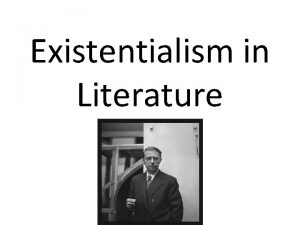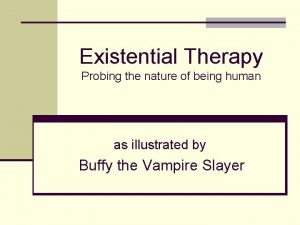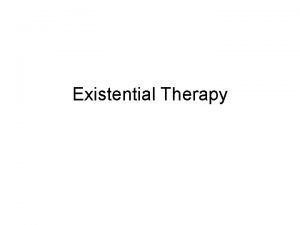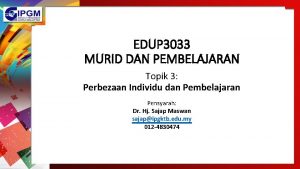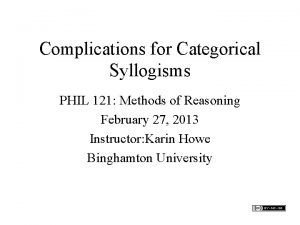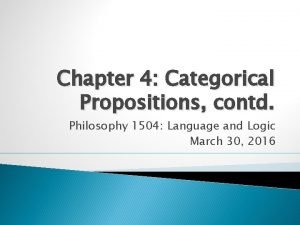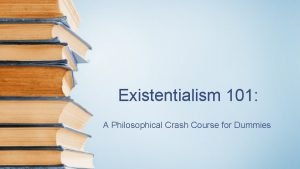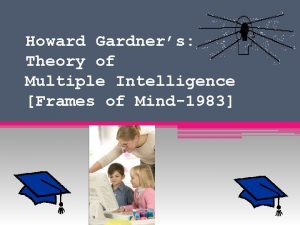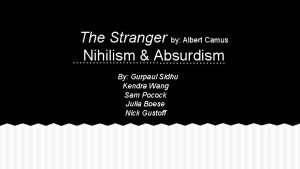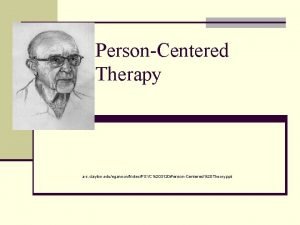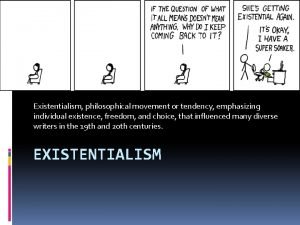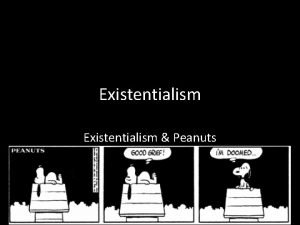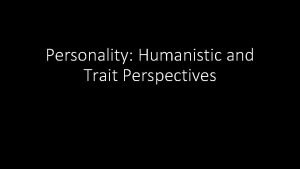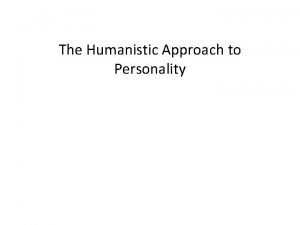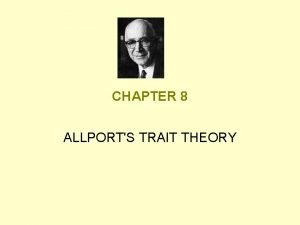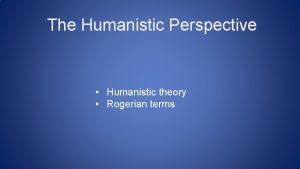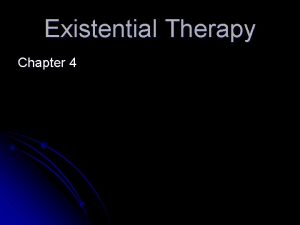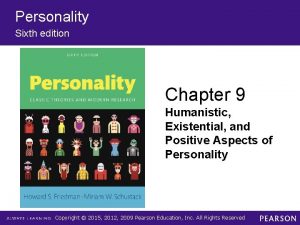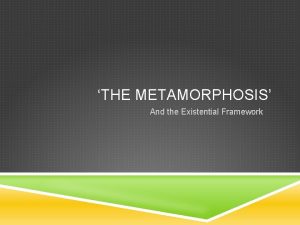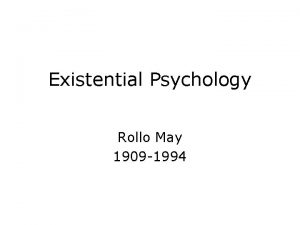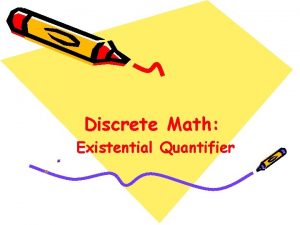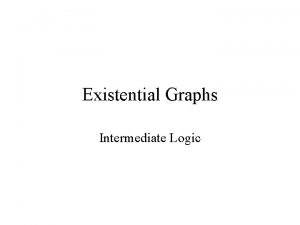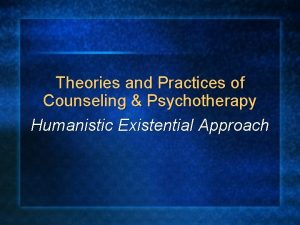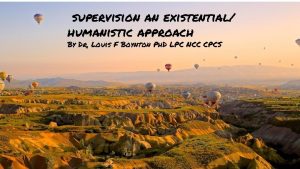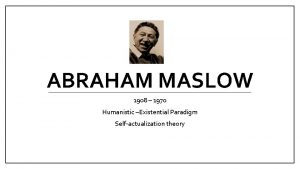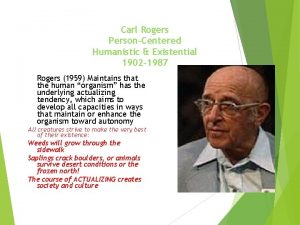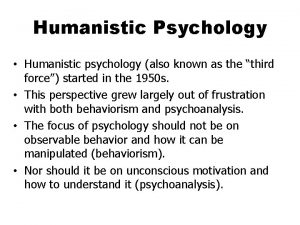Chapter 9 Humanistic Existential and Positive Aspects of

































- Slides: 33

Chapter 9: Humanistic, Existential, and Positive Aspects of Personality This multimedia product and its contents are protected under copyright law. The following are prohibited by law: (1) Any public performance or display, including transmission of any image over a network; (2) Preparation of any derivative work, including the extraction, in whole or in part, of any images; (3) Any rental, lease, or lending of the program. Copyright © 2012 Pearson Education, Inc. All rights reserved.

Existentialism An area of philosophy concerned with the meaning of human existence “Being-in-the-world” ◦ Must examine human beings in their world ◦ The self cannot exist without the world Phenomenological approach ◦ Subjective realities are important Copyright © 2012 Pearson Education, Inc. All rights reserved.

Humanism �An area of philosophy that emphasizes the personal worth of the individual and the importance of human values �“The third force” ◦ Emphasizes the creative, spontaneous, and active nature of human beings ◦ Third after psychoanalysis and behaviorism Copyright © 2012 Pearson Education, Inc. All rights reserved.

Humanism Our existence comes from our relations with others I-Thou dialogue—direct, mutual relationship I-It monologue—utilitarian view of another Copyright © 2012 Pearson Education, Inc. All rights reserved.

Humanism The human potential movement ◦ People are encouraged to realize their inner potentials ◦ Uses group meetings, self-disclosure, and introspection Copyright © 2012 Pearson Education, Inc. All rights reserved.

Erich Fromm Love ◦ Allows us to overcome our isolation but still maintain our individual integrity ◦ Loving is an art ◦ Modern society encourages existential alienation Copyright © 2012 Pearson Education, Inc. All rights reserved.

Existential Alienation: 1950 2000 Copyright © 2012 Pearson Education, Inc. All rights reserved.

Erich Fromm Dialectical humanism ◦ Reconciles the biological, driven side of human beings and the pressure of societal structure ◦ Believes people can transcend these forces through free will Copyright © 2012 Pearson Education, Inc. All rights reserved.

Carl Rogers Responsibility ◦ People have an inherent tendency toward growth and maturation ◦ “Becoming one’s self” ◦ People must strive to take responsibility for themselves Copyright © 2012 Pearson Education, Inc. All rights reserved.

Carl Rogers �Rogerian psychotherapy derives from Rogers’ personality theory �For constructive personality change: ◦ Therapist is supportive and nondirective ◦ Therapist is client-oriented ◦ Therapist provides the client with unconditional positive regard ◦ Therapist provides empathetic understanding of client's internal frame of reference Copyright © 2012 Pearson Education, Inc. All rights reserved.

Carl Rogers Importance of “congruence” ◦ For therapist (and client) ◦ Accurate self-perception ◦ Accurate communication Copyright © 2012 Pearson Education, Inc. All rights reserved.

Anxiety and Dread Rollo May Anxiety is triggered by a threat to the core values of existence We search for meaning in our lives when anxious Copyright © 2012 Pearson Education, Inc. All rights reserved.

Anxiety and Dread Victor Frankl ◦ Importance of personal choice ◦ Logotherapy Emphasizes the importance of choosing to find meaning in life Existential-humanistic approaches and support groups Copyright © 2012 Pearson Education, Inc. All rights reserved.

Abraham Maslow Hierarchy of Needs Only selfactualization is at the “being-level” (B -motive). The other needs are “deficiency needs” (D-needs or Dmotives) Copyright © 2012 Pearson Education, Inc. All rights reserved.

Self-Actualization �The innate process by which a person tends to gain spiritually and realize his or her potential �Self-actualized people are spiritually fulfilled, comfortable with themselves, loving, ethical, creative, and productive Copyright © 2012 Pearson Education, Inc. All rights reserved.

Self-Actualized Historical Figures (from Maslow) Copyright © 2012 Pearson Education, Inc. All rights reserved.

Abraham Maslow Peak experiences ◦ Powerful experiences in which people seem to transcend the self, be at one with the world, and feel completely self-fulfilled Common to people who are selfactualized Copyright © 2012 Pearson Education, Inc. All rights reserved.

Measuring Self-Actualization Maslow used interviews, observations, projective tests, biographical studies, etc. Personal Orientation Inventory (POI) ◦ Self-report questionnaire ◦ Seems to capture some aspects of a healthy personality Copyright © 2012 Pearson Education, Inc. All rights reserved.

Happiness and Positive Psychology Who is happy? ◦ Not a function of being in favorable circumstances Subjective well-being (self evaluated) ◦ Combination of characteristics: personal traits optimistic cognitions (i. e. , believing things usually work out for the best) internal psychological processes Copyright © 2012 Pearson Education, Inc. All rights reserved.

Suggestions for Pursuing Happiness 1. Help others 2. Monitor one's wealth-seeking 3. Seek spiritual or awe-inspiring experiences in life 4. Keep lists or journals of your accomplishments Copyright © 2012 Pearson Education, Inc. All rights reserved.

Suggestions for Pursuing Happiness 5. Avoid television 6. Set long-term goals and move on quickly after any short-term failures 7. Recognize that many people have tendencies to be relatively unhappy, due to a combination of biology, early experiences, thoughts and abilities, and current situations Copyright © 2012 Pearson Education, Inc. All rights reserved.

Positive Psychology Explores ◦ ◦ the positive forces of life Hope Creativity Wisdom Spirituality Application to mental health ◦ Studies of wisdom, thriving, and excellence in performance ◦ Escape focus on mental illness, pathological behavior, failures of motivation and control Copyright © 2012 Pearson Education, Inc. All rights reserved.

The American Paradox Our society embodies progress on many different levels: technology, wealth, and freedom Yet, we are not necessarily more happy; progress comes with a new set of problems often conceptualized as a moral decline Possible solutions: altruism, fidelity, family, community, spirituality Copyright © 2012 Pearson Education, Inc. All rights reserved.

Timeline: Humanistic-Existential Approach Copyright © 2012 Pearson Education, Inc. All rights reserved.

Timeline: Humanistic-Existential Approach Copyright © 2012 Pearson Education, Inc. All rights reserved.

Timeline: Humanistic-Existential Approach Copyright © 2012 Pearson Education, Inc. All rights reserved.

Timeline: Humanistic-Existential Approach Copyright © 2012 Pearson Education, Inc. All rights reserved.

The Humanistic-Existential Approach Analogy ◦ Humans as free, sentient beings seeking spiritual fulfillment Copyright © 2012 Pearson Education, Inc. All rights reserved.

The Humanistic-Existential Approach Advantages ◦ Emphasizes courageous struggle for self -fulfillment ◦ Appreciates the spiritual nature of a person ◦ Based on healthy, well-adjusted individuals ◦ Considers each individual’s experience unique Copyright © 2012 Pearson Education, Inc. All rights reserved.

The Humanistic-Existential Approach Limits ◦ May avoid quantification and scientific method ◦ Sometimes insufficiently concerned with reason ◦ Theories are sometimes ambiguous or inconsistent Copyright © 2012 Pearson Education, Inc. All rights reserved.

The Humanistic-Existential Approach View of free will ◦ Free will is essential to being human Copyright © 2012 Pearson Education, Inc. All rights reserved.

The Humanistic-Existential Approach Common assessment techniques ◦ Interview, self-exploration, art, literature, biographical analysis of creativity and special achievement, self-report tests, observation Copyright © 2012 Pearson Education, Inc. All rights reserved.

The Humanistic-Existential Approach Implications for therapy ◦ Encourages self-knowledge through experiences (including spiritual experiences) appropriate to the individual. ◦ Roger’s client-centered therapy offers a genuine, empathetic therapist who offers unconditional positive regard. Copyright © 2012 Pearson Education, Inc. All rights reserved.
 Humanistic-existential perspective
Humanistic-existential perspective One of the positive aspects of shopping is that it is fun
One of the positive aspects of shopping is that it is fun Legal and ethical aspects of nursing
Legal and ethical aspects of nursing Gram positive catalase positive cocci
Gram positive catalase positive cocci Negative number rules
Negative number rules Positive practice positive outcomes
Positive practice positive outcomes Speaking mathematically variables
Speaking mathematically variables Existential fallacy
Existential fallacy Existential-phenomenological forces
Existential-phenomenological forces A famous person with interpersonal intelligence
A famous person with interpersonal intelligence Faith is the bird that feels the light meaning
Faith is the bird that feels the light meaning Existential themes
Existential themes Existential well being
Existential well being Existential therapy view of human nature
Existential therapy view of human nature Existentialism activities for groups
Existentialism activities for groups Multicultural view of existentialism
Multicultural view of existentialism Fokus kecerdasan pelbagai
Fokus kecerdasan pelbagai Existential fallacy
Existential fallacy Existential fallacy
Existential fallacy Existentialism for dummies
Existentialism for dummies For all pots p, there is a lid l such that
For all pots p, there is a lid l such that Existential intelligence careers
Existential intelligence careers Absurdism
Absurdism Nihilism vs existentialism
Nihilism vs existentialism Client-centered therapy ppt
Client-centered therapy ppt Themes of existentialism
Themes of existentialism Peanuts existentialism
Peanuts existentialism Existential forgery
Existential forgery Humanistic theory of personality strengths and weaknesses
Humanistic theory of personality strengths and weaknesses Both psychoanalysis and humanistic therapy stress
Both psychoanalysis and humanistic therapy stress Humanistic approach to personality
Humanistic approach to personality Trait
Trait The physical outline of a display
The physical outline of a display Look at these pictures and answer the questions below
Look at these pictures and answer the questions below


